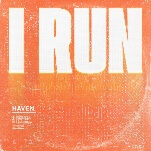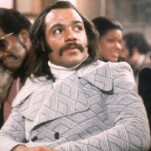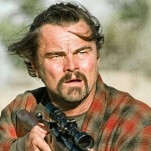AVC: Do you remember the first time you tried to design one of your own creations?
GDT: Yeah, I started designing the vampire on Cronos. I designed the monsters on my short films. To say “design” on my short films would be reaching, grasping. I just put them together. I slapped them together. But I designed a few clay figures for my stop-motion movies as a kid. It was a thrill. I think one of the things that I love the most is fabricating real things. So the process of the design is the first step, and then to see it realized is the real reward.
AVC: Was there a moment when you were like, “Yeah, this is what I want to do?”
GDT: I was already making short films. I had made three or four short films on Super 8. I was reading a book, a child encyclopedia. I read the chapter that talked about the job of film director, and I just thought, “You mean someone can make a living at doing this?” That was an amazing revelation and I thought about the people paying [directors]. “Suckers!” I thought, “You’re going to get paid for having a blast!”
AVC: How did your notebooks come to be?
GDT: It was a few years before Cronos. My screenplay-writing teacher told us about always carrying a notebook, because you don’t know. You’re going to hear a piece of conversation in a deli, or you’re going to hear people talking on the street, or you’re going to see something on a train ride, and you’re going to forget. And if you record it on a tape recorder, you’re never going to transcribe it, so he said, “Always carry a notebook.” And I started carrying a notebook, and all the Cronos annotations took about 100 pages, and then I lost the notebook, unfortunately.
AVC: Oh no!
GDT: I gave it to Jim Cameron, and to this day, it hasn’t appeared. We can’t locate it.
His first time writing a script
GDT: I had written shorts already [before Cronos], and it’s really hard. Screenplay is the toughest form of writing for me, because you need to be in present tense. You need to be describing things as they occur. And my screenplay teacher was really, really tough. He used to say, “Do not use any objectives that you cannot prove with the camera or the sound.” I read a lot of screenplays, and in Hollywood, they describe something that is impossible, like, “She walks by. We catch a whiff of the smell of her hair. We see the sunshine in her face. She’s a girl that brings joy into our life,” and you go, “All you’re going to see is a fucking woman passing by.” You know, or a fucking guy entering a room. You cannot objectivize. You have to prove what you’re saying. So it becomes very constricting.
AVC: What was it like putting your own stories in script form?
GDT: I remember the lesson that my teacher used to say, “You say it with actions and words.” The words are spoken. The actions are described. That was such a simple way of putting it. Then basically what you’re doing is, that’s a code. Then you have to decipher what you want to say in that code of actions and dialogue. That’s what is very difficult.
I remember shooting Blade. There was a passage that said, “Blade holds Nyssa in his arms. She’s dying. He pulls out his own sword and cuts his wrists for her to drink from it.” It’s a very simple passage. And then Wesley [Snipes] is holding the actress, and I say, “Now you have to pull your sword,” and he says, “With which hand? [Laughs.] I’m holding her with both.” It’s a simple, stupid anecdote, but what is remarkable is what you really say when you’re directing or writing. You really need to plan those things. They cannot just be nice words.
His first time directing
GDT: Well, the fact that you watch movies and then you think you know movies. It’s almost like watching football. Everybody at home knows what the players should be doing, and you shout at the TV, “Moron! Move to the left! Don’t do this!” It’s the same directing, or watching a cooking show. Everybody goes, “They should have done this and they would have won the contest.”
Directing is a huge difference [from just watching movies]. You’re in there. The more you know, the more you’re able to survive the day, but it’s a completely different experience than just loving movies. Then the other huge thing that I remember painfully is when you go from doing short films to a feature. It’s a completely different set of rules.
AVC: What would you say is the difference between short films and features as a director?
GDT: Number one anecdotally is the stamina, but also, the rhythm. You can do a short film that looks amazing in three minutes. Because all you’re doing is climax, climax, climax, or a very short set-up, climax, climax. But when you do a feature, if you make every scene great, and every scene is equally important, and everything has an in and an out, you realize that the movie actually becomes slow and boring. It’s one of the first things that is shocking, and it takes one or two movies to start getting the knack of it, if not more. Then you watch the masters. You watch someone like Polanski, and you realize how some scenes that are pedestrian, he covers in a very pedestrian way. It’s not because the guy doesn’t know. It’s because the guy knows that you need to ebb and flow. Whereas in a short, it’s basically a demo reel. Everything’s cool.
His first time in the American studio system
GDT: The first time I was in the studio system was the most unfortunate one, which was Mimic. I remember the worst fucking idea, the one that doomed the movie, and I knew right then and there the movie was kind of doomed already and I didn’t fight hard enough to reject it. It was when—originally my screenplay, the creatures, the insects, the giant mimic insects, were a breed of scarabs—one of the producers said, “Well, it’s New York. They should be roaches.” And the studio guys loved that idea, and I said, “Listen, this is horrible, because no matter how classy we make it, no matter how smart we make it, we’re still a giant roach movie.” And that’s inherently… it destroys the concept. A giant insect movie can be kind of cool. A giant roach movie can never, never survive that. And I knew than and there that was the doom of the fucking project.
His first time at the Academy Awards
GDT: Everybody says the same thing, but it’s true. Being nominated is an honor. You enjoy that part of it. I went to enjoy the experience, to have a good time. What I did realize is they move much faster when you’re watching them than when you’re there. The only thing I do remember clearly is my shoes were super tight, because I have Fred Flintstone feet. I have triple-E wide sneakers and they don’t make triple-E gala shoes. I had to fit my feet, and all I remember was telling my wife when it was over, “I’m going to walk barefoot to the car.”
The first time he saw fan art or a costume based on one of his creations
GDT: It was with Blade, because the design of the reapers caught on really strongly with the fans. Back then it was still the height of the garage kit for modeling and I was a huge garage kit modeler. I still paint models to this day. I remember seeing an illegal garage kit of the reapers on Blade, and I can tell you, it was the coolest thing for me. I felt, “I have arrived. It is so amazing.”
I remember when I was a kid I used to do the posters for all my shorts, and I used to use, you had that transfer type that you used to put “G-U-I-L…” and you had to trace the line on the image. I remember telling my wife, who was then my girlfriend in high school, I said, “I know I will have arrived when someone else lays out the typeface of my name in the poster.” [Laughs.]
AVC: Have you seen something really elaborate or really impressive based on one of your designs?
GDT: The most mind-blowing stuff I’ve seen is the stuff from Pacific Rim. I’ve seen some costumes that are amazing—people that really put a lot of work into doing a Jaeger or a Kaiju or a pilot suit. This year, I went to a couple of conventions, and I saw five or six Mako costumes that were perfect. The cosplay fans are super fun guys. Super creative.
AVC: How has the experience of opening up your notebooks to the world made you feel?
GDT: It was a good process with the publisher. They made the first selection of the images. I didn’t want to select the images. Then I kind of curated what they selected, but I thought the best thing to do is let them tell me what is interesting. If I select what I think is interesting, it may not be that interesting to anyone else. So they did a selection, and there’s some stuff in the book, honestly, that I found it was too personal or too obscure or too this or too that, and I didn’t expunge it. There’s stuff there that I feel a little queasy about it being in the book, but I think that’s a good signal, because that means I’m really communicating who I am. I really am communicating at the level that I thought this book would communicate with the fans.
Because look, I’m not a brand. I’m an acquired taste. So who’s going to buy this? I’m a caviar-filled doughnut. There’s not a huge demand; it’s not going to be in every supermarket. The people going to this book are people that genuinely, honestly, love what I do. All I can do is genuinely and honestly give them a piece of me.








































